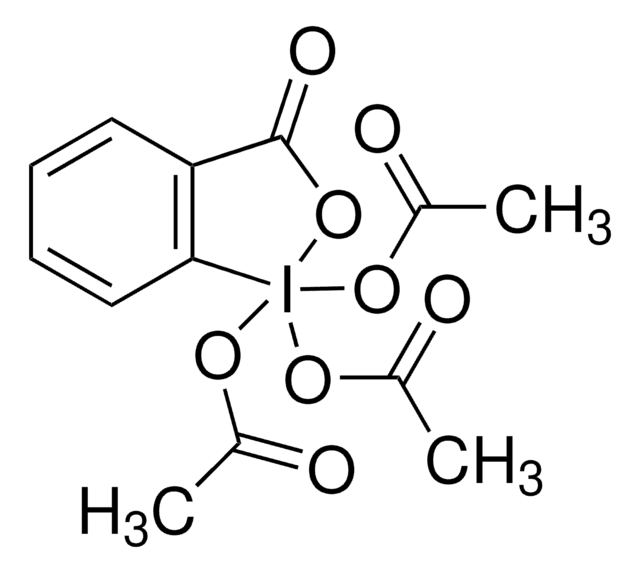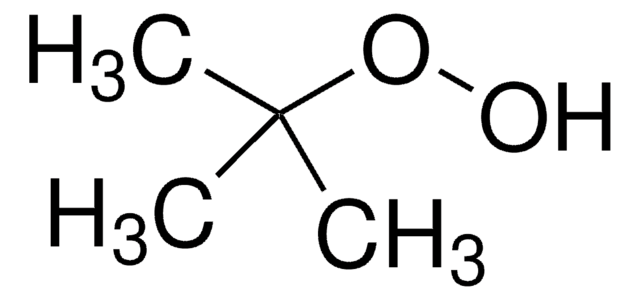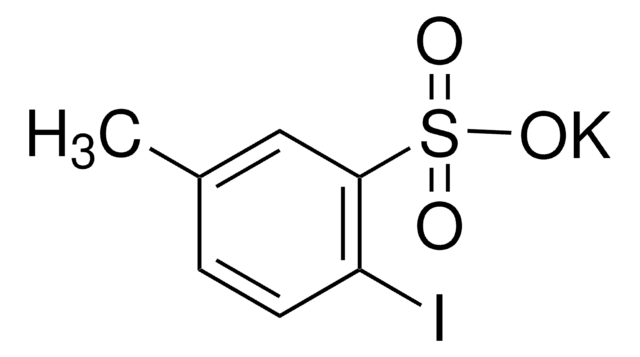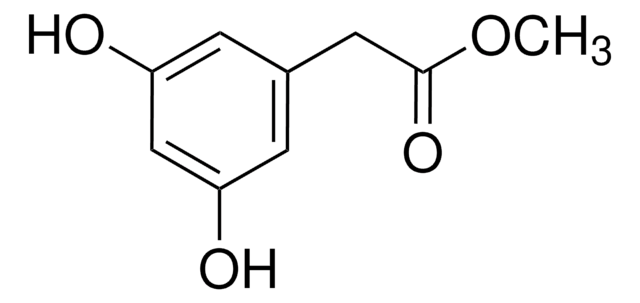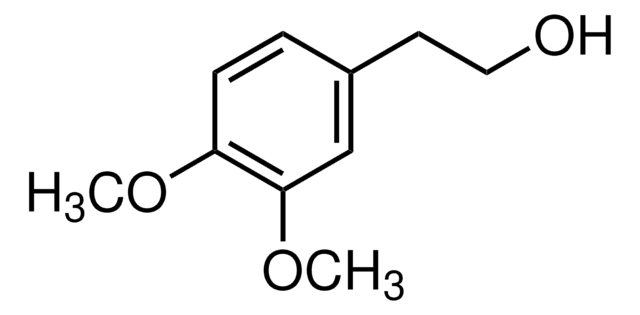Key Documents
274623
Dess-Martin periodinane
97%
Synonim(y):
1,1,1-Tris(acetyloxy)-1,1-dihydro-1,2-benziodoxol-3-(1H)-one
About This Item
Polecane produkty
Poziom jakości
Próba
97%
przydatność reakcji
reagent type: oxidant
mp
130-133 °C (lit.)
temp. przechowywania
−20°C
ciąg SMILES
CC(=O)OI1(OC(C)=O)(OC(C)=O)OC(=O)c2ccccc12
InChI
1S/C13H13IO8/c1-8(15)19-14(20-9(2)16,21-10(3)17)12-7-5-4-6-11(12)13(18)22-14/h4-7H,1-3H3
Klucz InChI
NKLCNNUWBJBICK-UHFFFAOYSA-N
Opis ogólny
Zastosowanie
- For 1° and 2° alcohols to aldehydes and ketones.
- In the synthesis of N-protected α-amino aldehydes from the corresponding N-protected β-amino alcohols.
- To synthesize alkynyl oxoaldehyde probe (AlkMGO).
Cechy i korzyści
- milder reaction conditions (room temperature, neutral pH)
- shorter reaction times and higher yields
- high chemoselectivity
- tolerance of sensitive functional groups, and a long shelf life
- simplified workups
Hasło ostrzegawcze
Danger
Zwroty wskazujące rodzaj zagrożenia
Zwroty wskazujące środki ostrożności
Klasyfikacja zagrożeń
Eye Irrit. 2 - Self-react. C - Skin Irrit. 2 - STOT SE 3
Organy docelowe
Respiratory system
Zagrożenia dodatkowe
Kod klasy składowania
5.2 - Organic peroxides and self-reacting hazardous materials
Klasa zagrożenia wodnego (WGK)
WGK 3
Temperatura zapłonu (°F)
Not applicable
Temperatura zapłonu (°C)
Not applicable
Środki ochrony indywidualnej
dust mask type N95 (US), Eyeshields, Gloves
Wybierz jedną z najnowszych wersji:
Masz już ten produkt?
Dokumenty związane z niedawno zakupionymi produktami zostały zamieszczone w Bibliotece dokumentów.
Klienci oglądali również te produkty
Produkty
Periodynan Dess-Martin umożliwia łagodne utlenianie alkoholi do aldehydów i ketonów odpowiednich do syntezy złożonych półproduktów.
Nasz zespół naukowców ma doświadczenie we wszystkich obszarach badań, w tym w naukach przyrodniczych, materiałoznawstwie, syntezie chemicznej, chromatografii, analityce i wielu innych dziedzinach.
Skontaktuj się z zespołem ds. pomocy technicznej